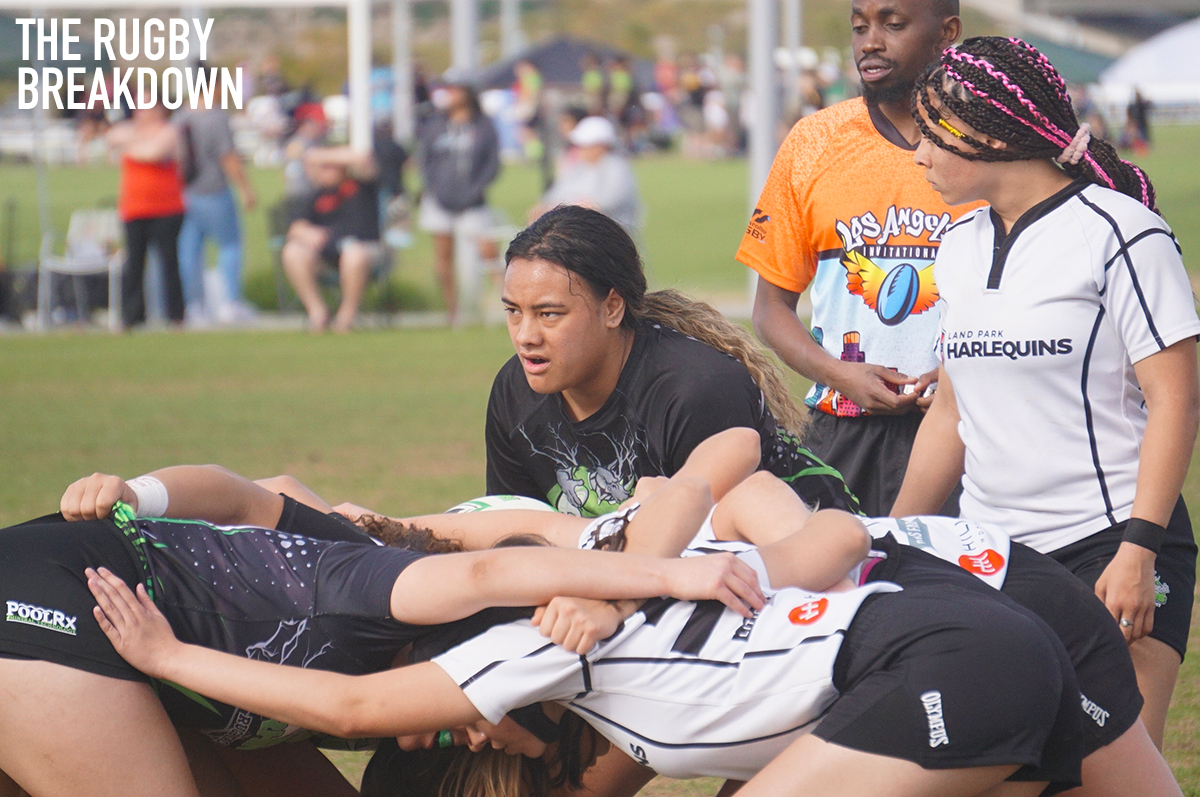
Scrums are a vulnerable area of the game / Photo: Jackie Finlan (TRB)
PRESS RELEASE – World Rugby published its Return-to-Play Guidelines earlier this month and followed with the introduction of 10 law trials that are designed to reduce the risk of COVID-19 transmission. The temporary adjustments concentrate on high-contact activities but their implementation is not mandatory given the variety of nations’ responses and management of the pandemic. A union may apply any or all of the law amendments based on its territory’s or government’s direction.
The trials are informed by the World Health Organization (WHO), which determined high-transmission risk as 15 cumulative minutes within one meter of an infected person. The important considerations for rugby are:
- It is generally accepted that sustained close contact carries greater COVID-19 transmission risk than close proximity
- t is also generally accepted that close proximity in an outdoor environment carries lesser risk that an indoor environment
- As transmission risk during a game is related to both physical contact and proximity, further evidence-based risk reduction should be focused on contact activities
- While individual exposure to contact activities such as scrums, tackles, lineouts, rucks and mauls are generally within 15 cumulative minutes, further exposure reduction is possible
- Risk reduction can also be achieved via best-practice match management, including hygiene measures, screening, testing and implementation of World Rugby’s return-to-play guidance
- Sport should only return when safe and appropriate to do so in line with government advice
Click here for the full package of optional temporary law trials >>
The Law Review Group conducted a comprehensive analysis of 60 matches before formulating the temporary laws. The trials provide limits to scrum options with no scrum resets, limits for players joining rucks and mauls, time to play the ball at the base of scrums and rucks reduced from five to three seconds and only one movement permitted for a maul. Such an approach could reduce contact exposure for tight five players by more than 30 percent, reduce exposure at the ruck by up to 25 percent and reduce maul exposure by at least 50 percent.
In addition to the on-field law and officiating interventions, a number of non-law hygiene measures are recommended for playing and training in line with WHO and World Rugby guidance:
- Mandatory hand and face sanitization pre- and post-match
- Regular ball sanitization before, during and after matches
- Single user water bottles/hydration
- Changing of jerseys, shorts and headgear at half-time where possible
- Prevention of huddles and celebrations involving contact
- Prevention of spitting and nose clearance
Recommended training measures
- Forwards units: high risk transmission activity such as an eight-person scrum should be undertaken against machine to limit exposure, packs should be trained separately
- Scrum and maul practice should take place at the end of a training session, preferably a day before a ‘down day’ to allow 24-48 hours before collective training
- High transmission risk training should be avoided within 48 hours of a game


